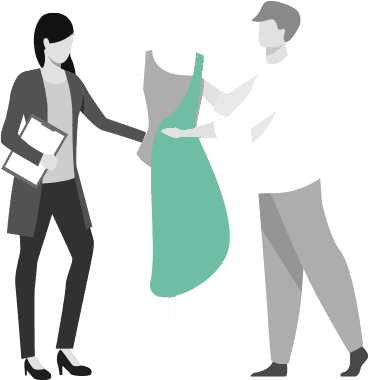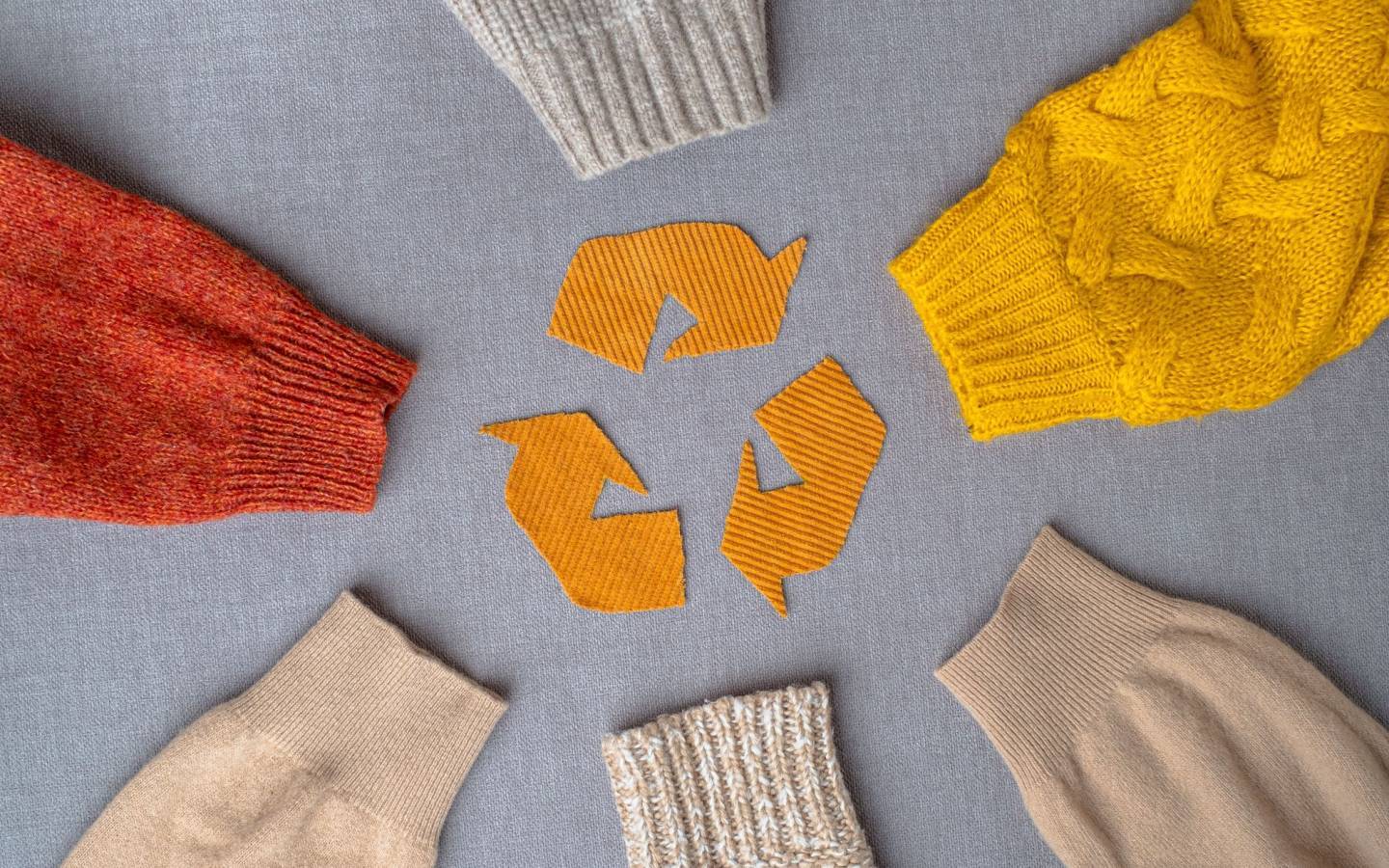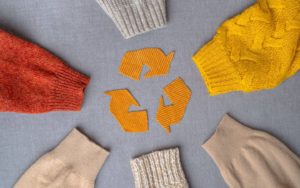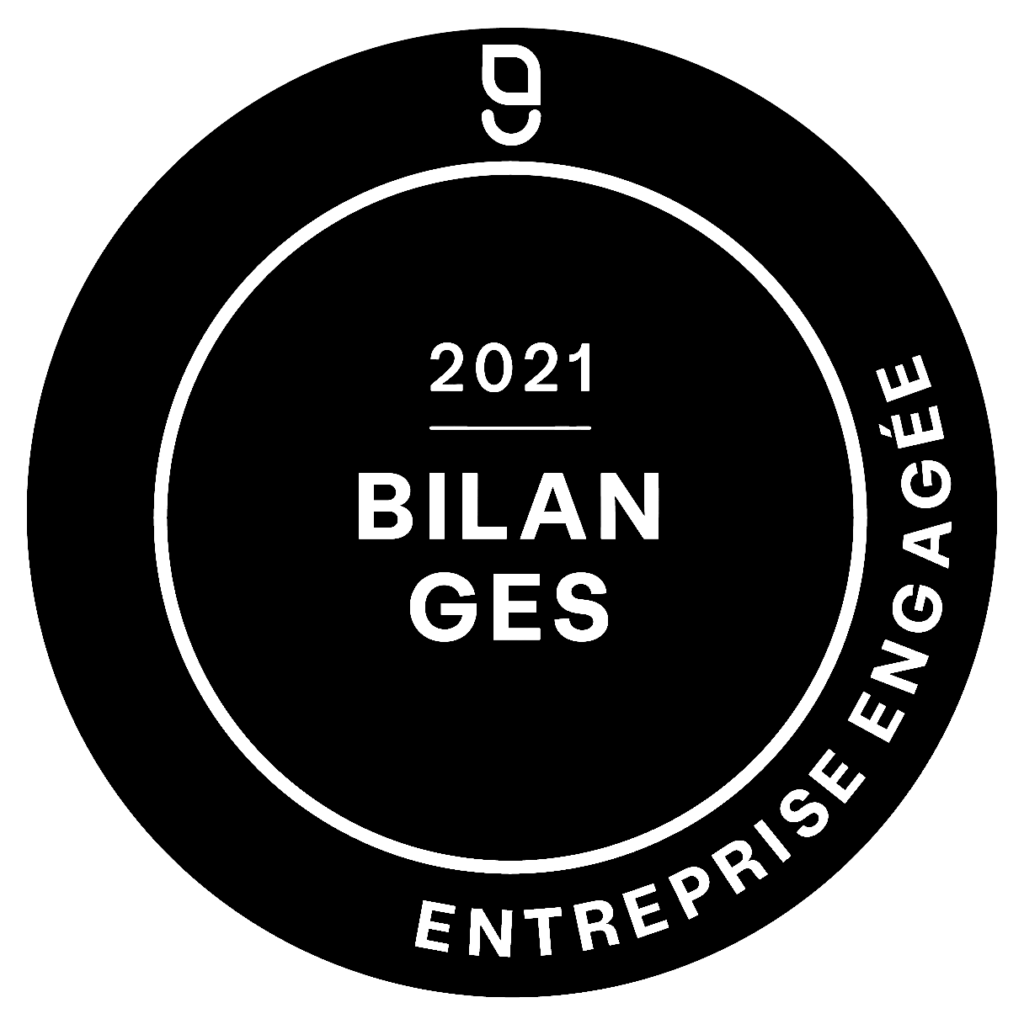According to the results of the survey on brand maturity carried out by Refashion, 80% of companies are part of an eco-conception approach (1) . In 2020, 2.4 billion eco-concepted products were put on the market (2) . Circularity, upcycling, recycling, life cycle, carbon cost, durability, repairability, minimalism… In the textile industry, eco-conception is at the heart of many challenges. The brands in the sector focus their efforts on three main strategies: improving the lifespan of the product, choice of materials and optimization of the end of life (3) . Yet there are plenty of them, spread across the long and complex fashion value chain . How to implement an eco-conception approach in fashion? What are the steps? Answers with Fashion Data.
Eco-conception, a solution to improve the environmental performance of the textile industry
According to Directive 2019/125/EC of the European Parliament and of the Council , eco-conception corresponds to “the integration of environmental characteristics into the design of the product with a view to improving the environmental performance of the product throughout its its life cycle” (4) . This directive establishes a framework for setting eco-design requirements .
Eco-design, a multi-step, multi-criteria and multi-stakeholder approach
Eco-conception is distinguished by an approach:
- Multi-step. It takes into account the different stages of the life cycle of the textile product, from the extraction of raw materials to its end of life, including its production, distribution and use;
- Multi-criteria. The approach is based on several criteria such as material and energy consumption, impacts on the climate, biodiversity, discharges into natural environments, etc. ;
- Multi-actors. At the head of an eco-design approach, there is a company or a public body. To guarantee its success, it must involve all the stakeholders playing a role in the life cycle of the product or exerting an influence on its use phase: suppliers, recyclers, collectors, repairers, consumers, users, buyers (5 ) .
Variable implementation depending on company policy
Depending on the company’s strategy, the eco-design approach can be deployed according to three aspects:
- Technical : new manufacturing processes, new functionalities, new materials
- Commercial : change in distribution mode, pricing (for example, switching from a product to a service), internal/external communication
- Organizational : development of partnerships, collection of environmental data (6)
The differences between eco-conception and eco-design
The notions of eco-conception and eco-design are part of a similar philosophy: to reduce the environmental impact of textile products throughout their life cycle. On the other hand, they do not have exactly the same fields of application.
Eco-conception concerns the development and manufacture of a product. As its name suggests, ecodesign focuses more on the aesthetic, functional aspect. For example, in the case of a chair, eco-conception will relate to the choice of raw materials, packaging or even recycling. Ecodesign will focus on appearance and practicality. Its aim is to place design at the heart of ecological issues .
Eco-design and circular economy: two complementary concepts
As a reminder, the circular economy aims to “limit the waste of resources and the environmental impact and increase efficiency at all stages of the product economy” (7) . Between the life cycle approach of the eco-design approach and the pillars of the circular economy, the parallels are easy to establish.
While the eco-design approach is still emerging, the circular economy has quickly been able to mobilize all of society’s players. To make informed choices, the “macro” concept of circular economy requires integrating the “micro” eco-design approach . Conversely, the eco-conception method needs the visibility of the circular economy in order to be able to deploy it on a large scale (8) .
Strategies to be implemented throughout the life cycle of the textile product
The textile-clothing eco-design wheel
The “Eco-conception for responsible brands” guide from the French Federation of Women’s Ready-to-Wear, the French Federation of Men’s Clothing Industries and Promincor – French Lingerie presents an eco-conception wheel applicable to textile products . It identifies the points of attention at each stage of the life cycle.
- Concept : strategy/management, design/style.
- Materials : specifications, origin/type, quality.
- Weight/volume : product, sizing/production/sales forecast, logistics.
- Production : environmental management, process, localization, quality management, human rights/animal welfare.
- Distribution : shops, distances, means of transport, packaging.
- Use : adapted products, consumer messages, frequency, temperature, pollution.
- Optimized life cycle : impact analysis, adaptability, sustainability, new services.
End of life: circularity, sector (9) .
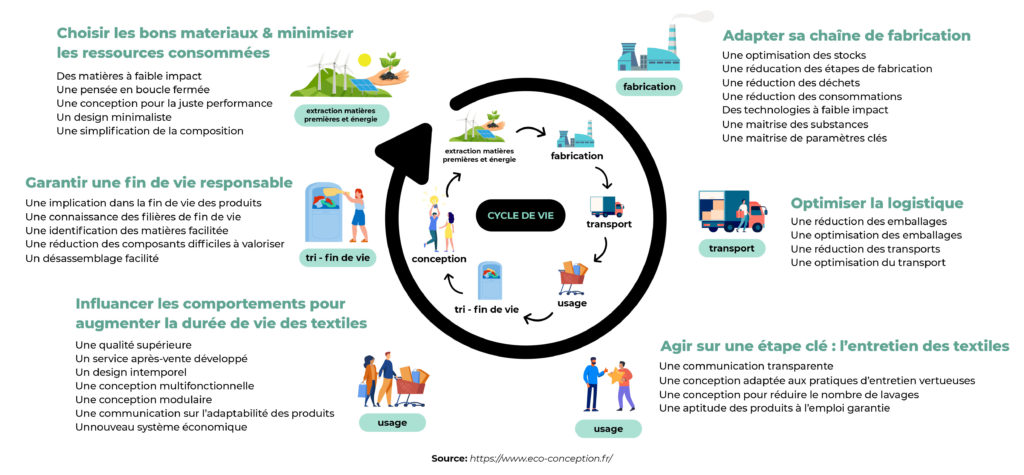
Key questions to ask at each stage of the life cycle
Throughout the life cycle, the company or the public organization at the initiative of an eco-conception approach must ask itself a certain number of questions. Here are some examples.
- Concept: Have management and teams received training in eco-conception? Is a version of the eco-design approach already present in the collection?
- Materials: Has a reference document has already been drawn up? Is the traceability of the raw material ensured? Is local fiber sourcing preferred? Are the selected materials subject to solidity criteria?
- Weight/volume: Has the composition of the product been simplified? Have unsold management measures been taken? Are stocks and deliveries optimized?
- Production: Are actions to reduce the environmental impact implemented on the production site? Are process innovations used (patronage, 3D prototyping, on-demand production, etc.)? Has a social audit of the production sites been carried out?
- Distribution: Is the transport distance to the shops reduced to a minimum? Are less CO2-emitting modes of transport used? Has the minimization of the impact of packaging been studied?
- Use: Are the textile products easy to maintain, durable? Are the maintenance instructions sufficiently educational and transparent? Is the release of microparticles limited?
- Optimized life cycle: Is the identification of environmental risks complete? Are the products adaptable to meet the needs of several seasons? Are they repairable?
- End of life: Were the textile products designed in a logic of circular economy? Are there outlets for recycling? (10)
The choice of raw materials, common sense above all
Lifespan of the garment, reduction of chemical substances, use of local resources, circular approach, dormant stocks… In fashion, there are many solutions for cleaner production, respectful of people and the environment.
The first thing to do is to identify the aesthetic, quality or performance requirements of the product. Next, a suitable type of fiber should be selected. Finally, the last step is to choose a low impact option of this material. To do this, three guidelines must be analysed:
- Types of resources : conventional, organic, recycled, biobased polymer
- Process implemented : traceability, water management, chemistry, energy, waste during the transformation phase
- Social approach : respect for human rights, working conditions, social protection, health, safety at work (11)
In the context of the circular economy, the recyclability of materials is a major challenge for the textile sector . Two processes are used to recover waste: mechanical and chemical recycling. The first has limited impacts on the environment. On the other hand, the fiber is of lower quality. The second is more energy consuming. However, the fiber obtained has properties similar to those of a virgin fiber.
While recycling technologies are available, their use remains moderate for the time being. In fact, only 15% of polyester and 1% of artificial materials come from a recycling channel (12) .
Good to know: Regulatory changes in favor of eco-design in fashion "Law n° 2020-105 of February 10, 2020 relating to the fight against waste and the circular economy (AGEC) promotes innovation, optimizes the recycling and collection of used textiles within the TLC (Textile clothing, household linen & footwear).It aims to improve consumer information through the affixing of environmental labels.Finally, article 45 of the AGEC law prohibits the destruction of unsold non-food items, of which part the clothes" (13).
The eco-conception approach is not a miracle solution for producing sustainably . It is the result of trade- offs between economic costs and environmental impacts. The goal is to achieve a balance between several design options. Eco-conception is based on a preventive approach . The concept encourages not only to analyze the product upstream, but also downstream. To successfully redesign collections, it is essential to ask the right questions, based on brand objectives. The trajectory to follow depends on the positioning of the company. The challenge of eco-conception is to break down the silos between the various design stakeholders . Data offers players in the textile sector the keys to orienting themselves towards the best strategies.
Sources:
1. https://refashion.fr/eco-design/sites/default/files/fichiers/Replays%20&%20Pr %C3% A9sentations%20Matin %C3% A9e%20 %C3% A9co-conception.pdf
2. https://extranet.refashion.fr/rapport-activite/2020/
3. https://www.eco-conception.fr/articles/h/eco-textile-8-la-roue-des-strategies-d-eco-conception-specifique-aux-textiles.html
4. https://eur-lex.europa.eu/legal-content/FR/TXT/PDF/?uri=CELEX:32009L0125&from=BG
5. http://www.eco Emballages.fr/sites/default/files/files/resources/8386_cgpme-ademe_guide_eco-conception.pdf
6. https://librairie.ademe.fr/dechets-economie-circulaire/2469-guide-pratique-de-l-eco-conception.html
7. 8. https://www.eco-conception.fr/static/economie-circulaire.html
9. 10. 11. 12. https://www.la-federation.com/fr/news-breves/le-guide-ecoconception-pour-marques-responsables-1894.html
13. https://www.textile.fr/documents/1587377119_essentiel-Filiere-TLC-Mars2020.pdf



